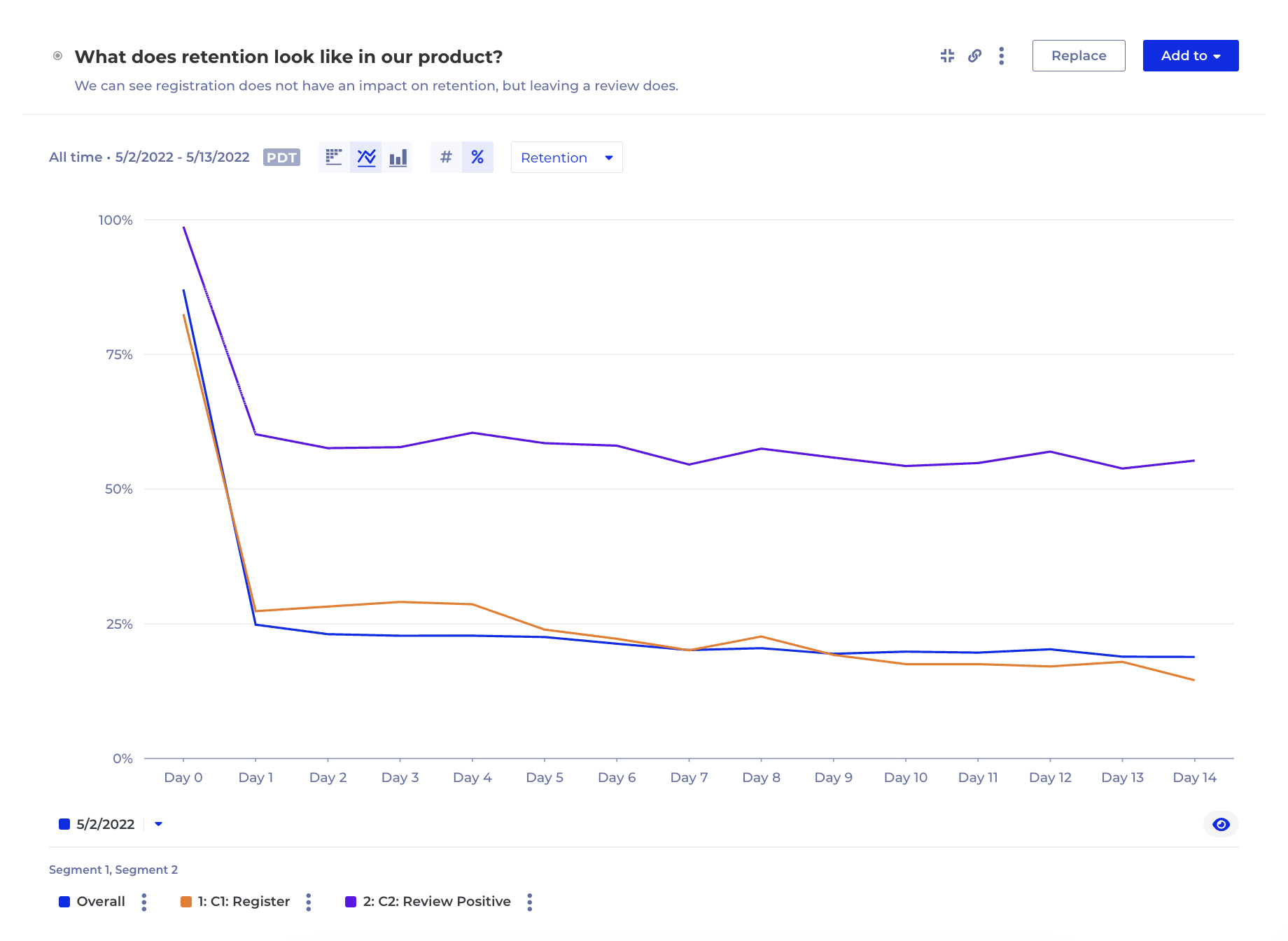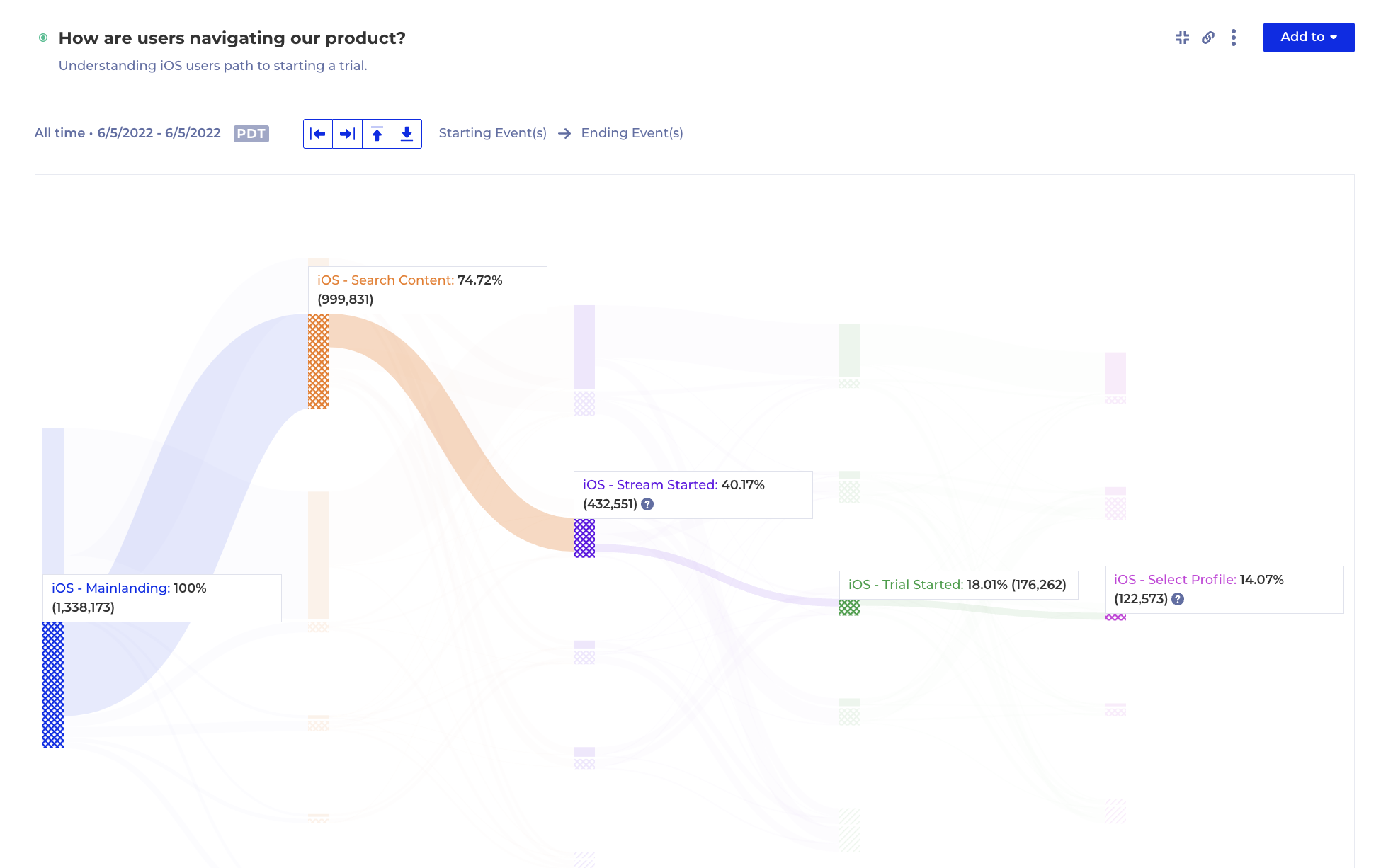Key features
Time Series Analysis

Funnel Conversions

Behavioral Cohorts

User Paths
User Retention
Kubit customer analytics solution


Time Series Analysis

Use Cases
eCommerce
Streaming
B2B

Funnel Conversion

Use Cases
eCommerce
Streaming
B2B

User Retention

Use Cases
eCommerce
Streaming
B2B

Behavioral Cohorts

Use Cases
eCommerce
Streaming
B2B

User Paths

Use Cases
eCommerce
Streaming
B2B
Kubit product analytics

CEO, Influence Mobile
Frequently Asked Questions
What is customer analytics?
Customer analytics provides businesses with methods and tools to collect, validate, and analyze customer data across various channels to better understand customer needs and make more informed business decisions. In a nutshell, customer analytics provides the insights needed for businesses to anticipate, respond to, and prepare for the demands of their customers…and ultimately win and retain more business.
Using customer analytics, businesses can group their customers based on certain data points and use that information to deliver optimized customer experiences. There are various ways of approaching customer analytics, depending on the type of insights you’re looking for:
- Collecting user data provides you with details about individual customers.
- Collecting engagement data reveals information about the ways that customers are interacting with your brand through digital channels.
- Collecting behavioral data helps you understand how customers have behaved in the past to help you predict how they will behave in the future.
- Collecting attitudinal data helps you understand customer sentiments about your brand.
- Collecting product analytics data gives digital businesses such as providers of ecommerce, digital apps, and media and entertainment a data-driven method of understanding exactly how users are engaging within their digital products.
By using the various tools and methods available for customer analytics to gain a more in-depth understanding of the customer experience, businesses can leverage these insights to increase customer engagement and retention to support innovation that is more directly aligned to customer needs.
For product managers that want to learn as much as possible about the customer experience within their digital product so they can identify high-value areas for optimization, warehouse-native customer analytics tools enable them to increase the quality and velocity of their decision-making using the power of their own data warehouse. When you want to understand the complete journey and experience of your customers, product analytics is your go-to tool.
How can a customer analytics platform benefit my business?
Today’s customers expect an excellent customer experience, and in the current competitive climate, businesses can’t risk not delivering. That’s why many businesses rely on customer analytics to drive data-driven decision making and guide strategic initiatives to improve customer engagement, boost customer retention, and provide more personalized experiences.
Customer analytics can benefit many different teams organization-wide, including:
- Product managers: Analyze behavioral cohorts, user paths, retention, and conversion metrics, leveraging a trusted data set with their own data warehouse. Use their data as a single source of truth to explore, iterate, and take decisive actions to innovate with confidence.
- Data scientists: Empower the entire organization to do more with their data by deploying self-service product analytics, leveraging the existing data model. Deliver reliable data that can be leveraged by all product, analytics, and marketing teams via a self-service UI. Ensure best-in-class governance and security tethered to their data warehouse.
- Sales leaders: Understand customer behaviors such as usage patterns and customer journey, which features are most valuable, and which features drive conversion. Better understand different market segments and their unique needs. Train the sales team to focus on the features that drive the most value for customers.
- Executive leadership: CEOs and those in executive leadership can use product analytics to make more informed, data-based, strategic decisions about the future of digital products. When the C-level endorses and engages in a data-driven culture from the top, it creates an environment that encourages the use of data in making decisions at every level in the organization.
When optimally deployed, product analytics reveals numerous paths and opportunities to better engage customers across the entire customer experience journey. With product analytics, organizations can take a data-driven approach to optimizing customer experiences using up-to-date insights about the ways that users are interacting with digital products. Product analytics supports organizations to exceed user retention goals, reduce churn rate, and foster customer loyalty.
How will Kubit’s customer analytics integrate with my existing systems?
Kubit is the first warehouse-native product analytics platform with zero-ETL. It fully leverages cloud data warehouses and data-sharing capabilities of the modern data stack. Its unique architecture reduces engineering efforts and can deliver actionable insights from your cloud data warehouse within a week.
The best way of getting started with customer analytics is not by copying a proprietary data model developed a decade ago by one of the traditional platforms. The new stage of data modeling is specifically designed for your product and your business and can adapt to your specific needs. With Kubit, you can use your data warehouse and data model of choice. Kubit delivers live insights from your custom data model and leverages your clickstream events with operational data dynamically. No data silos, no complex batch jobs, only one single source of truth that enables self-service analytics via SQL.
Kubit offers integrations with many different cloud data warehouses, including:
- Snowflake
- Databricks
- Google BigQuery
- Amazon Redshift
- Azure
- Presto
- Vertica
- ClickHouse
- Apache Hive
But we know that you need flexibility to get the maximum ROI from a combination of top-tier technologies. That’s why we created Kubit to align with all data architectures in an ever-evolving world of modern data stacks.
Kubit will meet you where you are on your journey, supporting you in getting the most out of your current data investments. At Kubit, we always say that the best time to start product analytics is now. You will benefit from access to actionable insights today that will enable downstream use cases tomorrow.
Technology partners that integrate with Kubit:
- Snowplow
- Eppo
- Braze
- Hightouch
- Segment
- mParticle
- Rudderstack
- Amperity
- Amazon Web Services
Kubit’s warehouse-native approach to customer analytics provides a lower cost of ownership for businesses, frees up their engineering resources, and delivers more complete and accurate self-service insights. Our customers can rest assured that compliance requirements are met because data never leaves their cloud data warehouse. Total cost ownership of customer analytics is less than with other solutions, deployment is six times faster, and scaling is easy.
What’s the difference between customer analytics and customer intelligence?
Customer intelligence involves gathering data about your customers from both internal and external sources that helps you better understand their wants, needs, and how they behave. Examples include their purchase history, their feedback, and their interactions with your brand on social channels. Customer intelligence uses insights from data provided by customer relationship management (CRM) systems.
Customer analytics dives deeper than customer intelligence, applying business intelligence to digital product use cases and enabling numerous teams within an organization (Product, Marketing, Growth) to understand how users are engaging within digital products. It collects data from your digital product, such as an app, streaming platform, website, online store, or connected device. This requires using a tool that is specific to product analytics to deliver insights, which focuses primarily on time series data and typically resorts in cohorts or user segments based on behavior.